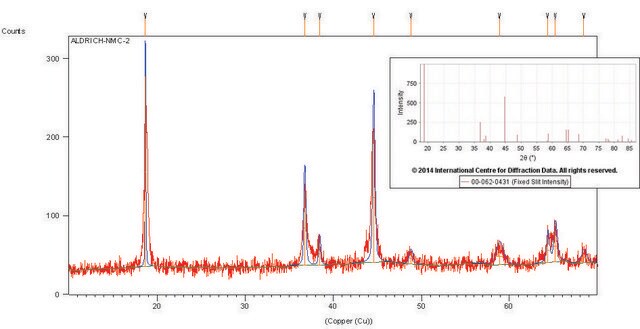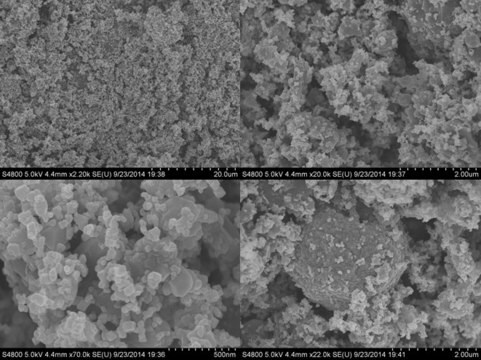757365
Lithium nickel dioxide
powder, <3 μm particle size (BET), ≥98% trace metals basis
Sinónimos:
LNO, Lithium nickel oxide, Lithium nickelate
About This Item
Productos recomendados
grade
battery grade
assay
≥98% trace metals basis
form
powder
mol wt
Mw 97.63 g/mol
composition
LiNiO2
particle size
<3 μm (BET)
mp
>1,000 °C (lit.)
density
4.62 g/cm3 (lit.)
application(s)
battery manufacturing
InChI
1S/Li.Ni.2O/q+1;;;-1
InChI key
VROAXDSNYPAOBJ-UHFFFAOYSA-N
Categorías relacionadas
General description
Application
Legal Information
Related product
signalword
Danger
hcodes
Hazard Classifications
Carc. 1A Inhalation - Skin Sens. 1 - STOT RE 1
Storage Class
6.1C - Combustible acute toxic Cat.3 / toxic compounds or compounds which causing chronic effects
wgk_germany
WGK 3
flash_point_f
Not applicable
flash_point_c
Not applicable
Elija entre una de las versiones más recientes:
¿Ya tiene este producto?
Encuentre la documentación para los productos que ha comprado recientemente en la Biblioteca de documentos.
Artículos
Professor Qiao’s laboratory lays out recent advances in conversion type lithium metal fluoride batteries. This review explores key concepts in developing electrochemically stable microstructures for wide Li-ion insertion channels.
Lithium-ion batteries (LIBs) have been widely adopted as the most promising portable energy source in electronic devices because of their high working voltage, high energy density, and good cyclic performance.
The critical technical challenges associated with the commercialization of electric vehicle batteries include cost, performance, abuse tolerance, and lifespan.
Due to the adverse impact of the continued use of fossil fuels on the earth’s environment and climate, researchers have been asked to develop new approaches for producing power using renewable sources like wind and solar energy
Nuestro equipo de científicos tiene experiencia en todas las áreas de investigación: Ciencias de la vida, Ciencia de los materiales, Síntesis química, Cromatografía, Analítica y muchas otras.
Póngase en contacto con el Servicio técnico









